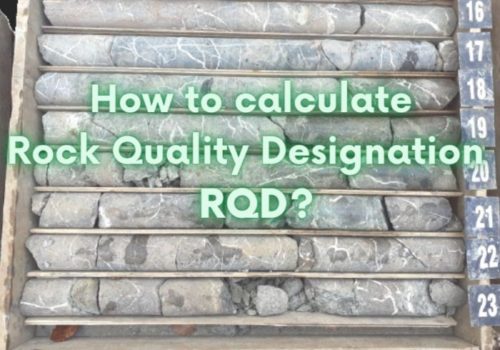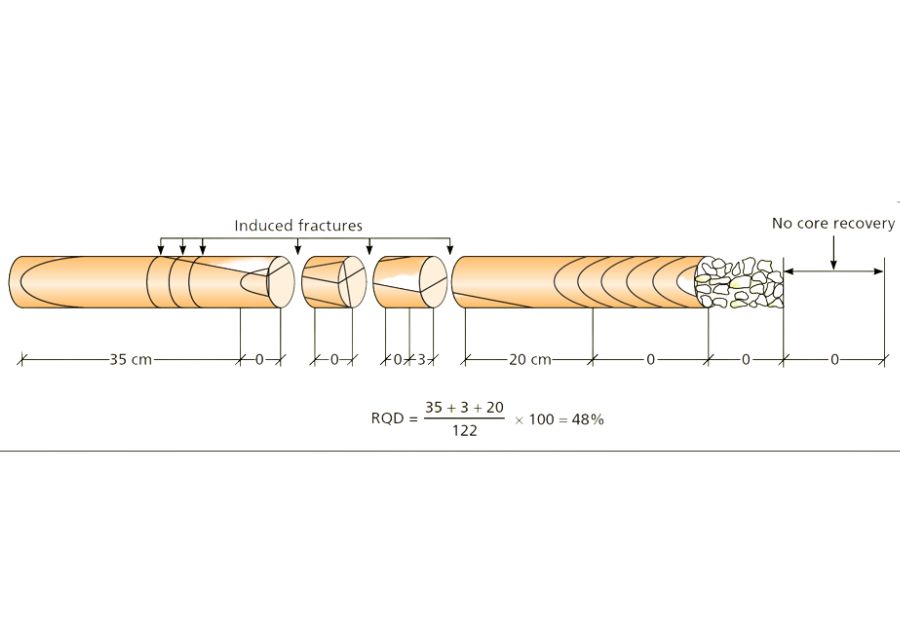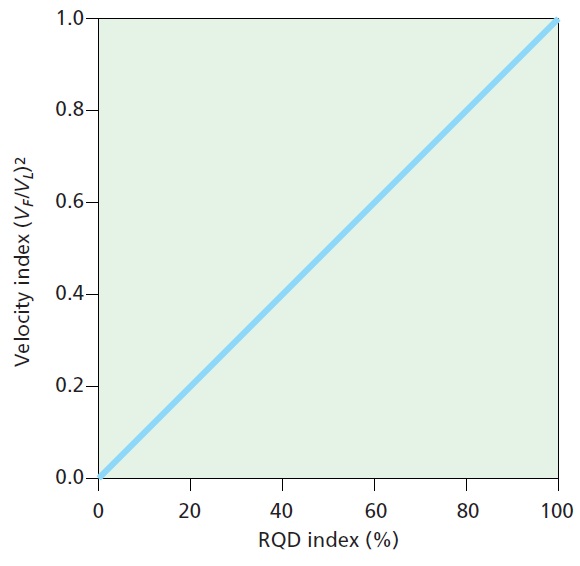How to calculate Rock Quality Designation – RQD?

Rock Quality Designation – RQD
Rock Quality Designation (RQD) is a widely used parameter in geotechnical and geological engineering to quantify the quality of rock masses based on the percentage of intact rock material within a rock core sample. It provides valuable information about the degree of fracturing and discontinuities present in a rock mass, which is crucial for assessing its mechanical properties, stability, and suitability for various engineering projects.
Rock Quality Designation – RQD is an index of the ratio between the sum of the lengths of core fragments longer than 10 cm and the total length of the core run:
The Rock Quality Designation (RQD) formula is:
RQD = Sum of Lengths of Intact Rock Pieces/Total Length of Rock Core Sample × 100%
Where:
- Sum of Lengths of Intact Rock Pieces is the total length of intact rock pieces in the sample.
- Total Length of Rock Core Sample is the total length of the rock core sample.
Only fresh or hard pieces of core are considered for estimating RQD. Those showing significant weathering (from Grade IV and above) are eliminated; in these cases, RQD is considered to be 0%. It is recommended that the operational run length should not exceed 1.5 m. The minimum core diameter on which the index should be calculated is 48 mm. The length of the core piece is measured along its central axis, using fragments with at least one complete diameter.
The procedure for measuring RQD is shown below,as well as the description of rock quality based on this index. It must be remembered that RQD is a function of the direction in which it is measured, which can result in different values for RQD being obtained from the same rock mass.

| RQD % | Quality |
| <25 | Very poor |
| 25–50 | Poor |
| 50–75 | Fair |
| 75–90 | Good |
| 90–100 | Very good |
The RQD index can be estimated from outcrop data using empirical correlations, such as that of Palmstrom, 1975 (ISRM, 1981):
RQD = 115 − 3.3 Jv for Jv > 4.5
RQD = 100 for Jv ≤ 4.5
For example, for a rock mass of acceptable quality with an RQD of 65, the corresponding value of Jv is 15, while for a poor quality rock mass with a RQD of 30, Jv is 26. The RQD index can also be estimated from the discontinuity frequency, λ, by means of the following expression that gives the minimum theoretical value of the RQD (Priest and Hudson, 1976):
RQD ≈ 100 exp-0.1λ (0.1λ + 1)
where λ is the inverse of average spacing of the discontinuities.
Relationship between spacing frequency and RQD index

Theoretical correlation between RQD and the velocity index.

